- Administrator
- Albums and Singles
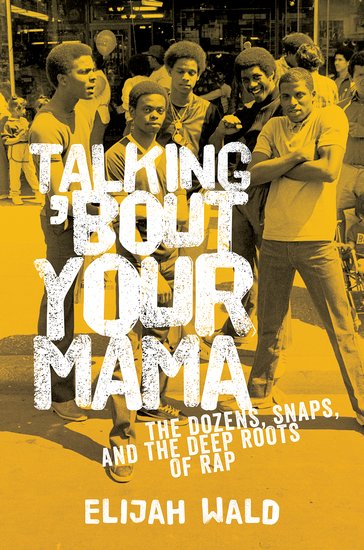
From Two Live Crew's controversial comedy to Ice Cube's gangsta styling and the battle rhymes of a streetcorner cypher, rap has always drawn on deep traditions of African American poetic word-play, In Talking 'Bout Your Mama, author Elijah Wald explores one of the most potent sources of rap: the viciously funny, outrageously inventive insult game known as "the dozens."
So what is the dozens? At its simplest, it's a comic chain of "yo' mama" jokes. At its most complex, it's an intricate form of social interaction that reaches back to African ceremonial rituals. Wald traces the tradition of African American street rhyming and verbal combat that has ruled urban neighborhoods since the early 1900s. Whether considered vernacular poetry, aggressive dueling, a test of street cool, or just a mess of dirty insults, the dozens is a basic building block of African-American culture. A game which could inspire raucous laughter or escalate to violence, it provided a wellspring of rhymes, attitude, and raw humor that has influenced pop musicians from Jelly Roll Morton and Robert Johnson to Tupac Shakur and Jay Z.
Wald goes back to the dozens' roots, looking at mother-insulting and verbal combat from Greenland to the sources of the Niger, and shows its breadth of influence in the seminal writings of Richard Wright, Langston Hughes, and Zora Neale Hurston; the comedy of Richard Pryor and George Carlin; the dark humor of the blues; the hip slang and competitive jamming of jazz; and in its ultimate evolution into the improvisatory battling of rap. From schoolyard games and rural work songs to urban novels and nightclub comedy, and pop hits from ragtime to rap, Wald uses the dozens as a lens to provide new insight into over a century of African American culture.
A groundbreaking work, Talking 'Bout Your Mama is an essential book for anyone interested in African American cultural studies, history and linguistics, and the origins of rap music.
More information can be found here.
Read More
- Administrator
- Albums and Singles

ABOUT THE FILM
During the 60’s and early 70’s as the war in Vietnam threatened its borders, a new music scene emerged in Cambodia that took Western rock and roll and stood it on its head – creating a sound like no other.
Cambodian musicians crafted this sound from the various rock music styles sweeping, America, England and France, adding the unique melodies and hypnotic rhythms of their traditional music. The beautiful singing of their renowned female vocalists became the final touch that made this mix so enticing.
But as Cambodian society - young creative musicians in particular - embraced western culture and flourished under its influence, the rest of the country was rapidly moving to war. On the left, Prince Sihanouk joined forces with the Khmer Rouge and rallied the rural population to take up arms against the government that deposed him. On the right, the Cambodian military, with American military support, waged a war that involved a massive aerial bombing campaign on the countryside. In the end, after winning the civil war, the Khmer Rouge turned their deadly focus to the culture of Cambodia.
After taking over the country on April 17, 1975, the Khmer Rouge began wiping out all traces of modernity and Western influence. Intellectuals, artists and musicians were specifically and systematically targeted and eliminated. Thus began one of the most brutal genocides in history, killing an estimated two million people – a quarter of the Cambodian population.
DON’T THINK I’VE FORGOTTEN: CAMBODIA’S LOST ROCK AND ROLL tracks the twists and turns of Cambodian music as it morphs into rock and roll, blossoms, and is nearly destroyed along with the rest of the country. This documentary film provides a new perspective on a country usually associated with only war and genocide.
The film is a celebration of the incredible music that came from Cambodia and explores how important it is to Cambodian society both past and present.
More information can be found here.
Read More
- Administrator
- Albums and Singles
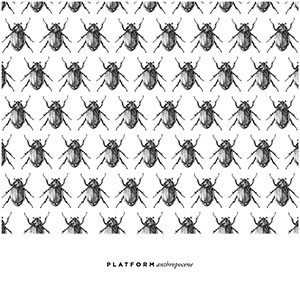 The three Norwegian (and one French) artists who make up Platform may play mostly jazz-oriented instruments but the sounds they create are anything but. Clarinet, cello, piano and drums meld together into a wonderfully jerky, unpredictable free improvised noise. As mostly a live act, this album may not fully do the sound of them collaborating justice, but it makes for an exceptionally good attempt.
The three Norwegian (and one French) artists who make up Platform may play mostly jazz-oriented instruments but the sounds they create are anything but. Clarinet, cello, piano and drums meld together into a wonderfully jerky, unpredictable free improvised noise. As mostly a live act, this album may not fully do the sound of them collaborating justice, but it makes for an exceptionally good attempt.
The sound throughout the ten songs that make up this album varies greatly, from vast space punctuated with strange instrument abuse to dense walls of bizarre instrumentation and improvisation.A piece such as "Brachycera" blends what sounds like percussive cello strings via Katrine Schi√∏tt and what resembles reversed feedback from unknown source.As a whole there is a loose and messy feeling to the piece, but in a fascinating and gripping manner.
"Coleoptera" mimics this feel, with random outbursts from Jonas Cambien's piano and muted sputters courtesy of Xavier Charles' clarinet.There is percussion via Jan Martin Gismervik, but it sounds like anything but drums.Instead it is a random outbursts of rattling and junky, metallic crashes.Sputtering percussive sounds and erratic piano heavily color "Orthoptera", resulting in a spacious work from all four musicians embracing quieter moments, but keeping the levels of entropy high.
Even with all of this intentional dissonance and free form chaos, there are moments where Platform almost sound as if they are playing something more formally composed.Bowed strings and harsh metallic percussion are at the forefront of "Gastropoda", but even with all of this weirdness the four sound as if they are all playing toward the same conclusion, giving an oddly musical sheen.Jazzy piano riffs offset rhythmic noises via percussion and cello, but "Araneae" has the quartet funneling that chaos into something with a loose sense of order and structure.
Essentially Anthropocene is an album of four musicians playing their instruments most often in ways they were never intended to be used.For that reason alone it is not the most accessible album, and that might not even fully capture the nature of the record.However, as a piece of free improvisation in the classic sense, Platform have recorded an album that features just the right amount of head scratching/"how the hell did they make that noise?" weirdness that the best practitioners of the genre manage to create.
samples:
 
Read More
- Administrator
- Albums and Singles
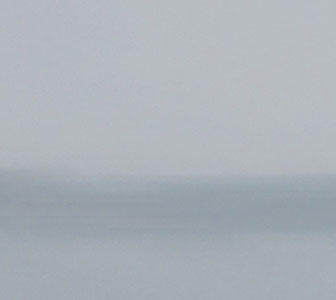 Triac formed in 2011 although did not release their first recorded material, In a Room until just last year. The Italian trio featuring former Tu M' member Rossano Polidoro (laptop) Marco Seracini (piano and synthesizers) and Augusto Tatone (bass) create glacial, yet gripping minimalist music in the spirit of Polidoro’s previous project. Both that and their follow-up record Days have a similar, consistent sound, although growth and development can already be heard from one album into the next.
Triac formed in 2011 although did not release their first recorded material, In a Room until just last year. The Italian trio featuring former Tu M' member Rossano Polidoro (laptop) Marco Seracini (piano and synthesizers) and Augusto Tatone (bass) create glacial, yet gripping minimalist music in the spirit of Polidoro’s previous project. Both that and their follow-up record Days have a similar, consistent sound, although growth and development can already be heard from one album into the next.
There is a certain classical sensibility to the four pieces that make up In a Room, mostly in the form of lush, repeating motifs.Individual instruments are rarely obvious, rather things blend into a misty miasma of veiled melodies and synth noises.The opening "Part I" is the most airy moment here:gentle space looms, punctuated with some occasional swells of low frequency sound (possibly Tatone's bass guitar?) to pepper the loop-heavy sound.There is a cyclic structure that is very apparent, but never does it feel repetitive and via synth strings and pulses, the last half especially shows marked evolution.
"Part II" begins with the trio hinting at a sound that will appear further on in the album, as well as characterize the subsequent Days more heavily.The opening minutes are more forceful and heavy tone-wise, although the heaviness eventually subsides and becomes a lighter piece of drone.There is a mass of shifting melodies to be heard, but compared to the first piece it is more basic from a compositional standpoint.In general that darker sensibility appears more in earnest on "Part III", immediately from the rumbling dark ambient opening.Compared to what preceded it, there is a bleaker and gloomier feel with the deeper noises and bowed-strings like passages.
The concluding "Part IV" sees the band working with less forceful and oppressive sounds, keeping the low end scaled back.Instead, they focus on playing with slow, heavily filtered melodies scattered atop a slightly dissonant bed of fuzzy noise.While Polidoro is not a newcomer to this type of work, this first released collaboration with Seracini and Tatone is a fully realized debut.
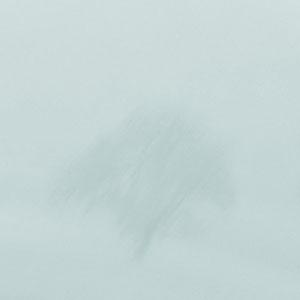 Even with that, there is a slightly more cohesive feel to Days that is fitting for a sophomore release. The trio alternates a bit more often here between the light, floaty pieces and the more grounded, rumbling bassy ones.Complex and intertwining layers define much of "Day One", which opens with a shimmering Aurora Borealis like brightness and closes with pristine, beautifully pure tones.On "Day Three" the band continues with what most likely are gentle synth bells and glistening drones.Like many of the other pieces the trio manage to create pieces that are heavily focused on repetition, but never become repetitious.
Even with that, there is a slightly more cohesive feel to Days that is fitting for a sophomore release. The trio alternates a bit more often here between the light, floaty pieces and the more grounded, rumbling bassy ones.Complex and intertwining layers define much of "Day One", which opens with a shimmering Aurora Borealis like brightness and closes with pristine, beautifully pure tones.On "Day Three" the band continues with what most likely are gentle synth bells and glistening drones.Like many of the other pieces the trio manage to create pieces that are heavily focused on repetition, but never become repetitious.
"Day Two", on the other hand, has the trio working slightly bleaker.Complex, yet heavy melodies factor heavily into the piece, but rather than being grounded it has a disconnected, isolated feel to it that feels more like drifting in outer space than amongst the clouds."Day Five" pairs the two styles together, with lighter higher register sounds blending with the deeper rumbling passages to result in a great stylistic mix.
The final two pieces close Days on a predominantly moody note.The low end surge of "Day Six", mixed with the bowed-string like drones result in a piece that is murkier, with an ever so subtle hint of malignance to it.It never reaches that cavernous reverb and clanking dungeon chains vibe of dark ambient, but hints of that are here.Whereas that piece is somewhat menacing, "Day Seven" has the same rumbling to it, but with the gentle gliding melodies Triac infuse, it sounds more sad than sinister.
With two albums released in the past year, it is unsurprising that much of the sound of In a Room and Days sound a bit overlapping.But the strong consistency is balanced by a more daring, diverse sound on Days.With a sound consistent with Tu M's output but retaining its own distinct identity, Triac have already produced two exceptional albums of rich and diverse, yet meditative and reflective electronic music.
samples:
 
Read More
- Administrator
- Albums and Singles
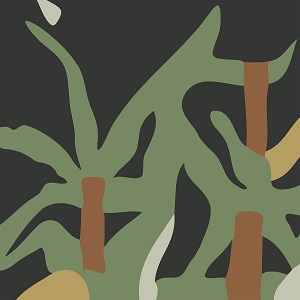 No one could have predicted another Valet record, not even Honey Owens. A rash of techno EPs with The Miracles Club over the last couple of years and a long silence on the hallucinatory front seemed to signal that she was finished with her freaked-out days as a guitar wrangler and soundscape shaper. Drum machines and synth pianos were her new instruments and the dancefloor was her new home, the most natural venue for her conversion to four-on-the-floor rhythms and house melodies. Then, with almost an electric shock, news of a new Valet album on Kranky. Not all is as it was before, however. After seven years and the birth of a child a lot has changed in Valet’s world, and the music has changed with it in a way that is almost as surprising as the album happening at all.
No one could have predicted another Valet record, not even Honey Owens. A rash of techno EPs with The Miracles Club over the last couple of years and a long silence on the hallucinatory front seemed to signal that she was finished with her freaked-out days as a guitar wrangler and soundscape shaper. Drum machines and synth pianos were her new instruments and the dancefloor was her new home, the most natural venue for her conversion to four-on-the-floor rhythms and house melodies. Then, with almost an electric shock, news of a new Valet album on Kranky. Not all is as it was before, however. After seven years and the birth of a child a lot has changed in Valet’s world, and the music has changed with it in a way that is almost as surprising as the album happening at all.
Before Honey Owens dropped the Valet moniker and leaped into The Miracles Club, she sang and played guitar, percussion, and synthesizer on albums by Nudge and Jackie-O Motherfucker. Which is to say, she manipulated instruments for those groups in one fashion or another. By her own admission, she didn’t know how to play an instrument in 1998, when Tom Greenwood and company asked her to perform on Flat Fixed, but she must have been a quick learner. In 2002 she recorded with Paul Dickow and Brian Foote on Nudge’s Trick Doubt, showing not even the least sign of dilettantism, intentional or otherwise. Five years later, when she recorded Blood Is Clean, she had her rudiments in order and was pulling barbed wire from her guitar with the kind of energy and confidence that only practice can yield, but her sound was still nervy and unpolished. Both that album and Naked Acid radiate a sweaty, basement-sessions type of heat. They are bluesy and humid, records swamped in fuzz and the psychedelic fever of drugs and new age self-discovery.
That heaviness translated well on Nudge’s As Good as Gone, released in 2009, which is appropriate because after that the trippy Valet sound disappeared. A series of 12" EPs as The Miracles Club, her acid house project with Rafael Fauria, followed in 2010, ‘11, and ‘12. One of them, A New Love, was released on Mexican Summer. XLR8R then asked them to host a podcast and eventually they produced a dance video so goofy and uninhibited, it could have only come out of Portland, Oregon. Then Owens and Fauria had a kid together and suddenly Valet was on the table again.
Nature sees Honey Owens back behind her guitar, but it doesn’t see her all the way back to the tenderfoot rawness of her first two albums. Rafael Fauria is with the band this time and Mark Evan Burden returns from Naked Acid to play the drums, bass, and keyboard with them. The addition of a new member alone makes a tremendous difference. It transforms Valet from a solo project with guests into a band, and Honey’s writing emphasizes that arrangement. While the songs are still psychedelic, many of their obstreperous edges have been filed down and filigreed with verses, choruses, and hummable melodies. "Sunday" and "Nature," which open the album, are sprightly and feather-light, framed in the glint of strummed guitars and weightless, wordless vocals. They sound like the work of a completely different group and are so far removed from Valet’s previous albums that it takes "Signs" to confirm the authorship. That song is built up from relatively clean layers of percussion, synthesizer, and phased guitars, and it includes a synth lead capable of impressing itself into even the least impressionable of ears, but it induces that same hazy, out-of-focus feel found on older songs like "Sade 4 Bri" and "Drum Movie." In a way, "Signs" links Nature to Honey’s past just so that it can cut the cord. The shift from a darker, murkier sound to a more relaxed, more lighthearted one is what defines the album. It just wouldn’t make as much sense without some kind of nod to what came before.
"Lion" and "Transformation" pick up the blithesome thread, as do the two (mostly) instrumental pieces that fall in-between, and "Child" wraps it up with a guitar and bass duet that repurposes the Valet blues as a relaxed, half-improvised lullaby. It’s as if Honey Owens freed herself from something heavy and simultaneously found her stride as a songwriter. Blood Is Clean and Naked Acid hinted that this was possible, The Miracles Club material confirmed it, and, if you will excuse the pun, Nature is where that talent has found its most natural expression to date. Honey Owens sounds great with a keyboard and a drum machine by her side, but with a guitar in hand, and with something like a full band behind her, she sounds better than she ever has.
samples:
 
Read More
- Administrator
- Albums and Singles
|
Read More
- Administrator
- Albums and Singles
 Digitally generated sound has been a staple of Scott Morgan's career as Loscil since his first release. With the project named for one of the basic operators in the popular Max/MSP software package, it is unsurprising that much of Sea Island is the result of DSP programming. However, the sound Morgan creates has a far richer, more organic quality than many who work with similar strategies and methods, and this album is one that is gripping in its natural sounding warmth.
Digitally generated sound has been a staple of Scott Morgan's career as Loscil since his first release. With the project named for one of the basic operators in the popular Max/MSP software package, it is unsurprising that much of Sea Island is the result of DSP programming. However, the sound Morgan creates has a far richer, more organic quality than many who work with similar strategies and methods, and this album is one that is gripping in its natural sounding warmth.
The moments of Sea Island that I found the most captivating were the ones where Morgan makes some concessions to standard rhythms and melody.On "Iona" he constructs mostly a thick expanse of fuzz and drone, with the occasional inclusion of a sequenced melody that makes it one of the most memorable on here.He creates a more song-like, captivating ambience on "Sturgeon Bank" by blending what almost sounds like a programmed drum pattern with a plinking passage of piano.
"In Threes" has Scott generating a thick, gauzy fog around an insistent synth throb, again working with a sense of rhythm that makes it stand out strongly.He expands upon these more conventional qualities via shards of melody and twinkling electronics.Echoing melodies delicately permeate the understated "Bleeding Ink," which becomes all the richer as what resembles processed strings and other heavily treated and mangled electronic tones are introduced.
On some of these pieces, Morgan throws out the more traditional music elements entirely and instead embraces the purity of processed sound.There is a slow repetition throughout "Catalina 1943," in which layer after layer of electronic sound is placed together to result in a rich and heavy drone.The concluding piece, "Angle of List," ends the album in a gigantic expanse of drone and tone.Nothing explicitly melodic or rhythmic is overtly noticeable, but it still results in an achingly beautiful piece of music.
Even though much of Loscil's music is generated by a computer, Scott Morgan's own technical skill and compositional ability results in a record with an undeniably organic warmth.Parts of his music are underscored by concessions to rhythm and melody, and these are the pieces I found myself coming back to.However, even those in which form is eschewed in favor of tone and texture, his beautiful and delicate touch is undeniable.
Samples can be found here.
Read More
- Administrator
- Albums and Singles
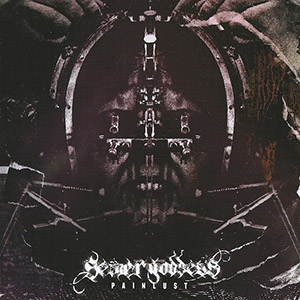 Boston’s Sewer Goddess inhabit the blurry, aggressively dark space between doom metal plod and power electronics/industrial, blending those two extreme genres in a way that works flawlessly. Those two genres are not known for anything subtle, and Painlust is anything but, resulting in an album that embraces the best elements of both of those genres while managing to avoid the cliché pitfalls that are a significant problem within both.
Boston’s Sewer Goddess inhabit the blurry, aggressively dark space between doom metal plod and power electronics/industrial, blending those two extreme genres in a way that works flawlessly. Those two genres are not known for anything subtle, and Painlust is anything but, resulting in an album that embraces the best elements of both of those genres while managing to avoid the cliché pitfalls that are a significant problem within both.
Clocking in at six tracks and a bit under a half hour, Painlust is a tight, compact album that wastes no time in its brutality.Vocalist/programmer/composer Kristen Rose has her pieces fleshed out by a full band on this album, resulting in a disc that has a more complex, realized sound compared to their prior works.The opening song "Plague Axis" has the band at their most industrial.Droning synths and feedback are mixed with depressive synth patterns, as Rose’s screams and metallic banging sound off in the distance.There is a certain lo-fi density to the mix that calls to mind the always popular black metal production style, but the actual sound is a different matter entirely.
Sampled dialog and programmed rhythms immediately give "Black Meat and Bones" an industrial sensibility, increased by the fact that Jason Beckwith’s guitar has a vaguely Godflesh feel to it, with its barely under control feedback harmonics.The vocals are screamed and the production is appropriately big and bombastic, blending the dissonance of guitar noise with the insistent rhythms of electronics."Melena's Mask" also functions as a great hybrid of the metal and the industrial, with its prominent stabbing guitar and inhuman programmed drums.Rose’s vocals alternate between manic screams and monotone disconnect, fitting the backing music that vacillates between chaotic noise and organized music.
That laconic vocal style also appears on "My Grave," making for a stark contrast with the aggressive metal-tinged chug that the rest of the band is creating behind her.Her vocals may have more of an industrial processing tinge to them on "Flog," but the rest of the song is a dense wall of dirgy banging and detuned guitars.The loose bass guitar and massive drums of "Get the Rope" make for a similar sounding song as well, putting a doomy bed behind the megaphone shouted vocals.
With a strong mix of the death-laden din of Brighter Death Now and the mechanized grinding guitar sound of Godflesh, Painlust is a hybrid of two styles I have been quite fond of for a number of years.Even with that level of extremity and heaviness, the album never drifts into self-parody territory.The result is an extremely strong record that screams and wallows beautifully in its malignant darkness.
samples:
 
Read More
- Administrator
- Albums and Singles
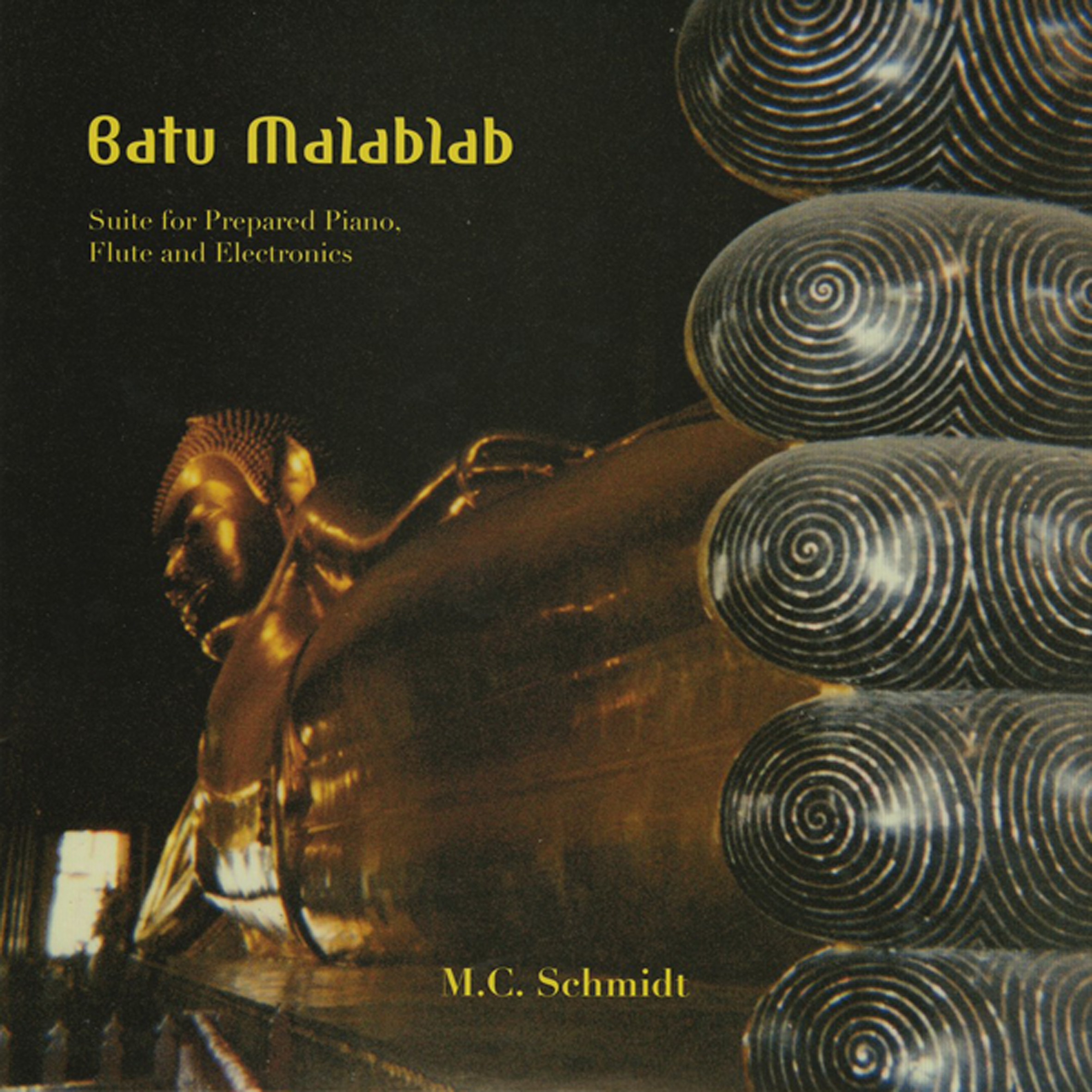 Matmos has long been one of the most uniquely outré and inventive projects around, so it follows that Schmidt's debut solo album would be similarly bizarre and Batu Malablab is certainly that (and more).  In fact, it actually turned out to be far stranger and more challenging than I ever could have imagined: I was expecting a Can- or Harappian Night Recordings-style "ethnographic forgery," but what I got sounds much closer to an electronics-damaged imaginary soundtrack for a '60s Southeast Asian avant-garde theater piece.  Or what the Cannibal Holocaust soundtrack might have sounded like if jointly composed by Cage, Stockhausen, and Harry Partch.
Matmos has long been one of the most uniquely outré and inventive projects around, so it follows that Schmidt's debut solo album would be similarly bizarre and Batu Malablab is certainly that (and more).  In fact, it actually turned out to be far stranger and more challenging than I ever could have imagined: I was expecting a Can- or Harappian Night Recordings-style "ethnographic forgery," but what I got sounds much closer to an electronics-damaged imaginary soundtrack for a '60s Southeast Asian avant-garde theater piece.  Or what the Cannibal Holocaust soundtrack might have sounded like if jointly composed by Cage, Stockhausen, and Harry Partch.
Megaphone/Knock 'em Dead
"Batu Malablab" is a Malay phrase that means "mixed stone."  Aside from that, the only relatively concrete thing that I can say about this album is that it was made using a prepared piano, flute, and electronics and that it consists of two side-long pieces ("Lowland" and "Mountain").  Everything else about Batu Malablab, however, is thoroughly disorienting, inexplicable, and synapse-frying.
I suppose the "Lowlands" side is the more straightforward half of the album, at least initially.  However, it is only straightforward in the sense that it sounds fairly unambiguously like a human improvising on a broken or self-constructed gamelan.  To Schmidt's credit, he does a spectacular job weaving that illusion–were it not for the recording quality, I could easily be convinced that "Lowland" was some kind of Nonesuch Explorer field recording from a remote mountain temple untouched by the modern world rather than a white guy in Baltimore with a piano.  After about four minutes though, things start to go off the rails into uncharted terrain, as Schmidt's plinking and clanking becomes more erratic and is joined by a somewhat dissonant flute, some reverberating clacking, an insectoid whine, and something that sounds like a dying trombone ensemble.  Equally wrong-footing is the structure (or anti-structure): "Lowlands" never quite builds or coheres into something more substantial: it only become more alien, ominous, and disjointed as it unfolds, reaching a deranged anti-crescendo when the eerie synths and vocals appear near the end to evoke a bizarre mood of retro-futurist space-horror.
The "Mountain" side opens with a return to clanking faux-gamelan of "Lowlands," this time embellished with some jungle-type field recordings and a queasy haze of uneasily harmonizing flutes.  Gradually, a menacing rumble intrudes, along with some extremely artificial and space-y vintage synthesizer textures and we are officially back in Crazyville once again.  The transition is more rapid and dramatic this time though, as the piece has completely transformed into some kind of hallucinatory industrial drone/spoken word piece with a woozy backing choir of angelic voices by the six-minute mark. (Un)naturally, it only gets stranger from there, dissolving into a brainsick miasma of backwards vocals, spaced-out electronic blurts and whooshes, and chirping birds before again reverting to its junkyard-gamelan plinking and plonking origins.  I think there might also be some excited monkeys thrown in for good measure.
I do not know that I would necessarily describe Batu Malablab as a great (or even good) album, but it definitely succeeds spectacularly at something and normal quality standards do not seem to apply to whatever it is that has happened here.  It is hard to say exactly what that is though.  The one certainty is that Batu Malablab is the most "difficult" album that I have heard in a very long time, as well as the most "outer limits" vision that I have yet heard from an otherwise sane person.  Also, I suppose Schmidt's most admirable feat with this album is that he boldly and completely avoided anything resembling the here and now, as well as anything resembling straight-up multi-cultural burgling or half-assed pastiche.  Instead, Batu Malablab maniacally careens back-and-forth between an imagined exotic past and a vintage sci-fi vision of the future with no stops in between, resulting in a probable lock for the single most alien and zeitgeist-defying release of 2015.
 
Read More
- Administrator
- Albums and Singles

The trajectory of Alex Cobb's music over the course of the last decade could be viewed as a distillation of tone and atmosphere to arrive at Chantepleure, his most optimistic and sanguine musical statement to date. The album, however, was created at a time of heartache, isolation and emotional upheaval and acts as a balm of tender tones where abstract guitar lines circle and suspend in a kind of refined elegance. Noise, once a hallmark of Cobb’s music, has not been entirely removed, but manifests here in a different form.
A delicate dissonance shades the edges of the these four tracks, providing textural color and gorgeously offsetting the lush nature of the music. Even in short spans, this approach yields substantial results. At three and a half minutes, “Disporting with a Shadow” pulls back the curtain just enough to let flecks of natural guitar notes and traces of alluring melody seep into the mix. The album closes with the side-long “Path of Appearance,” a cathartic composition that is best described as a poem of overtones which, like the rest of the album, is sourced from electric guitar and minimal effects but feels more akin to the sun stretching to fill all corners of a darkened room. A testament to sonic refinement, a way of coping, an exciting step forward for an established artist—the minimalist Chantepleure is all of these things.
More information can be found here.
Read More
- Administrator
- Albums and Singles
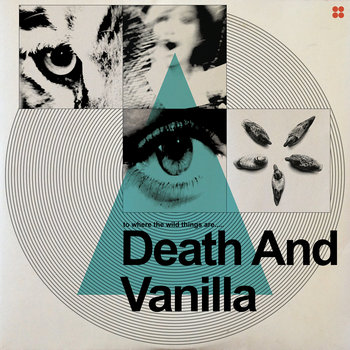
Formed in Malmö, Sweden by Marleen Nilsson and Anders Hansson, Death And Vanilla utilise vintage musical equipment such as vibraphone, organ, mellotron, tremolo guitar and moog, to emulate the sounds of '60s/'70s soundtracks, library music, German Krautrock, French Ye-ye pop and 60s psych. They revel in the warmth of older analogue instruments to create a more organic sound, each loose wire and off-kilter noise adding to the rich atmosphere.
After a handful of successful releases including a debut EP in 2010, their self-titled LP in 2012 - which sold out on pre-order - and a beautifully designed 7" single, the experimental pop duo were invited to compose a live soundtrack for the classic horror film, Vampyr (1932), for the Lund Fantastisk Film festival in Lund. Now, newly signed to Fire, the band return with To Where The Wild Things Are. Named after the Maurice Sendak children's book, the album is comprised of pop music with a wild, dreamy and experimental edge, celebrating imagination and the ability to travel to stranger recesses of the mind.
Where the Wild Things Are starts off with some of the most "pop" songs they've ever recorded, typified in the sweet and melodramatic "Arcana," and the classic pop inspired "Time Travel." Like Sendak's book of the same name, the album then proceeds into stranger and stranger territory, resulting in some of the most experimental material Death And Vanilla have produced, such as the six-minute "Something Unknown You Need to Know" and the machine-like, surf-guitar track "The Hidden Reverse."
The band recorded the new album themselves in their rehearsal space, using just one microphone - a 70's Sennheiser - which they bought at a flea market for a tenner. It is this unconventional recording process that gives Death And Vanilla their unique personality; using a trial-and-error approach to recording has rewarded the album with a strangeness that would not have otherwise been achievable.
Creating deliciously enticing soundscapes, full of moody Moogs, swirling melodies and breathless vocals, their influences on To Where the Wild Things Are are apparent and diverse, ranging from Ennio Morricone to Scott Walker, Tom Dissevelt to Norman Whitfield, The Zombies to Sun Ra, and Bo Hansson to The BBC Radiophonic workshop.
"Their sound is woozy, evocative and blatantly in thrall to the kaleidoscopic sounds of Broadcast, the BBC Radiophonic Workshop, Mazzy Star and 60's sci-fi soundtracks. It's beautifully listenable; a veritable tapestry of warm sounds to soothe and refresh. Their previous records have been popular but this could send them into the stratosphere" Norman Records
"Death And Vanilla's sound is like an elaborate dreamscape composed of foggy visions and mind-altering notions." Redefine Magazine
"Death And Vanilla are a Swedish haunted-pop duo who have found themselves caught in the vortex of retro-futurism circa 1969... they've got a good grip on the baroque psychedelia of the United States Of America and Free Design," Aquarius Records
More information can be found here and here.
Read More




